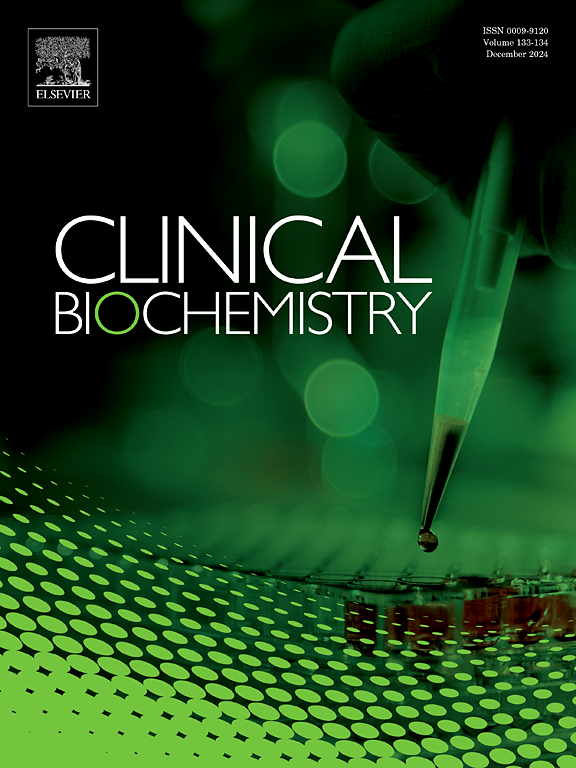动脉粥样硬化中的修饰LDL变异:分子途径、诊断潜力和治疗前景
IF 2.1
3区 医学
Q2 MEDICAL LABORATORY TECHNOLOGY
引用次数: 0
摘要
改性低密度脂蛋白(LDL)在动脉粥样硬化的发病机制中起关键作用,有助于斑块形成和血管炎症。这篇综述探讨了各种形式的修饰LDL,包括氨甲酰化LDL、硝化LDL和脱氮化LDL,以及各种酶修饰如何促进疾病进展。我们讨论了这些改变如何促进被称为电负性LDL(LDL(−))的异质性,高度致动脉粥样硬化颗粒池的形成。机制的见解强调涉及上调清道夫受体,泡沫细胞形成和慢性炎症反应的途径。LDL(−)的诊断和预后意义,包括其与自身免疫性疾病(如类风湿关节炎)和慢性疾病(如2型糖尿病)的关联,强调了其作为心血管风险生物标志物的潜力。针对LDL(−)的新兴疗法,如单链片段可变抗体的纳米配方,在减少病变大小和炎症方面显示出有希望的疗效,而不会产生不良的全身反应。尽管取得了这些进展,但临床转化的一个关键障碍是缺乏适合常规实验室使用的标准化、高通量分析。因此,未来的研究必须优先发展和验证强大的临床分析来量化这些致动脉粥样硬化颗粒,这是建立它们在高级风险分层中的作用和指导新的治疗策略的关键一步。本文章由计算机程序翻译,如有差异,请以英文原文为准。
Modified LDL variants in atherosclerosis: molecular pathways, diagnostic potential, and therapeutic perspectives
Modified low-density lipoproteins (LDL) play a pivotal role in the pathogenesis of atherosclerosis, contributing to plaque formation and vascular inflammation. This review explores how a diverse array of forms of modified LDL, including carbamylated LDL, nitrated LDL, and desialylated LDL, along with various enzymatic modifications, contribute to disease progression. We discuss how these alterations promote the formation of a heterogeneous, highly atherogenic pool of particles known as electronegative LDL (LDL(−)). Mechanistic insights highlight pathways involving upregulated scavenger receptors, foam cell formation, and chronic inflammatory responses. The diagnostic and prognostic implications of LDL(−), including its association with autoimmune conditions like rheumatoid arthritis and chronic conditions such as type 2 diabetes, underscore its potential as a biomarker for cardiovascular risk. Emerging therapies targeting LDL(−), such as nanoformulations of single-chain fragment variable antibodies, demonstrate promising efficacy in reducing lesion size and inflammation without adverse systemic effects. Despite these advances, a critical barrier to clinical translation is the lack of standardised, high-throughput assays suitable for routine laboratory use. Future research must therefore prioritise the development and validation of robust clinical assays to quantify these atherogenic particles, a crucial step for establishing their role in advanced risk stratification and for guiding novel therapeutic strategies..
求助全文
通过发布文献求助,成功后即可免费获取论文全文。
去求助
来源期刊

Clinical biochemistry
医学-医学实验技术
CiteScore
5.10
自引率
0.00%
发文量
151
审稿时长
25 days
期刊介绍:
Clinical Biochemistry publishes articles relating to clinical chemistry, molecular biology and genetics, therapeutic drug monitoring and toxicology, laboratory immunology and laboratory medicine in general, with the focus on analytical and clinical investigation of laboratory tests in humans used for diagnosis, prognosis, treatment and therapy, and monitoring of disease.
 求助内容:
求助内容: 应助结果提醒方式:
应助结果提醒方式:


